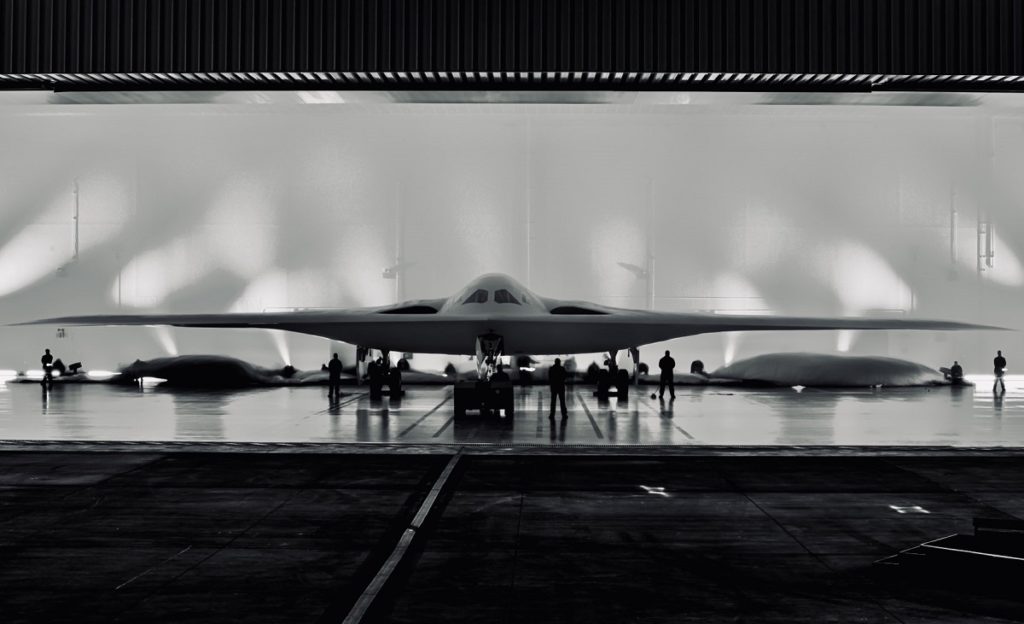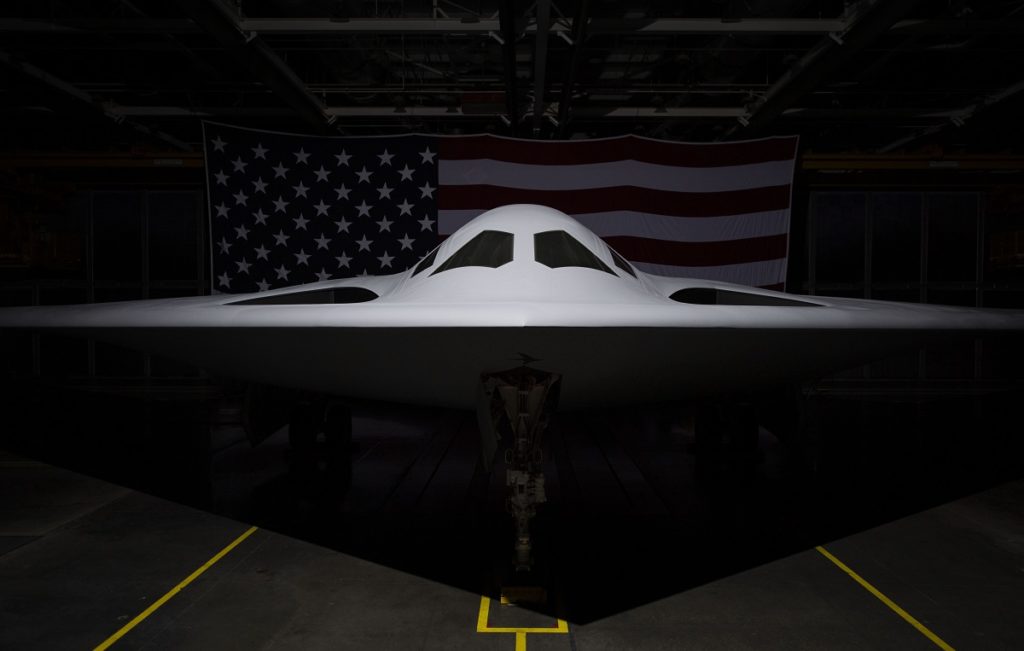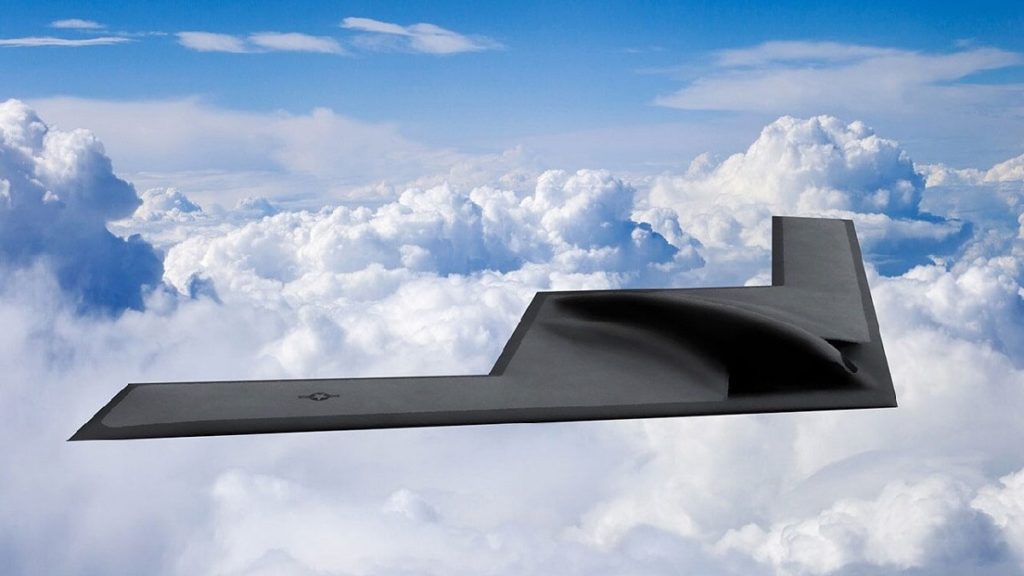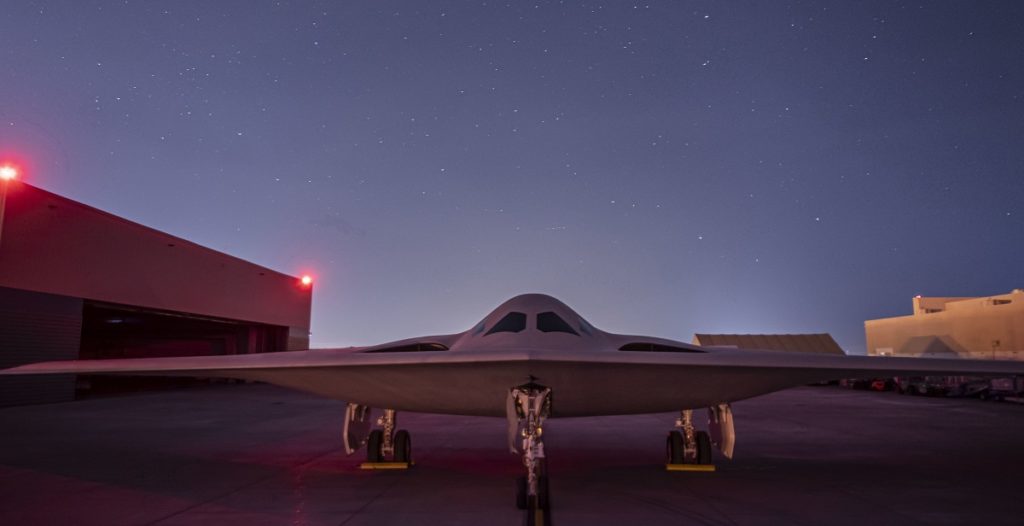The US Air Force and manufacturer Northrop Grumman unveiled the first B-21 Raider stealth bomber at the Plant 42 complex at Palmdale in California on December 2.
The once-in-a-generation aircraft is designed to replace the US Air Force’s B-1B Lancer and B-2 Spirit bombers in service, and its design continues Northrop Grumman’s legacy of advanced ‘flying wing’ models.
The B-21 has been named ‘Raider’ in honour of the famous 1942 raid on Tokyo just three months after Japan’s attack on Pearl Harbour by 16 B-25 Mitchell bombers hastily-modified to be launched from an aircraft carrier. Led by Lt Col James Doolittle, the 80 pilots and crew became known as ‘Doolittle’s Raiders’.
FLYING WING LEGACY
Northrop Grumman has a long legacy of building advanced aircraft with flying-wing configurations.
At the end of World War 2, Northrop designed two large flying wing bombers, the propellor-driven YB-35, and its jet-powered YB-49 cousin. These designs differed from previous aircraft in that they were essentially just a wing with no clearly discernible fuselage ahead or behind the wing, and either very small or no vertical tail surfaces. The flying wing is a low drag design and is very efficient, is inherently more difficult to detect on radar, but also has unique handling characteristics due to the lack of vertical control surfaces.
Both the YB-35 and YB-49 were built in prototype form and demonstrated promising altitude performance and handling qualities. But the YB-35’s piston engines were by then obsolete, while the YB-49 was let down by immature jet engines which produced insufficient power. Consequently, neither entered production, and the USAF instead chose the less-radical B-36, B-47, and B-52 designs for their early strategic bomber force.
Moving forward to the 1970s, when the USAF laid out its Advanced Technology Bomber (ATB) requirement in the late 1970s for a large aircraft that could ‘hunt’ Soviet mobile intercontinental ballistic missile systems and remain almost invisible to radar, Northrop resurrected its flying wing concept.
Designed in secret, the B-2A Spirit was unveiled at Palmdale in 1988. Despite have a similar layout to the YB-49 of 40 years earlier, the B-2’s smooth curved shaping and dark grey coatings gave it a far more sinister appearance. By far the stealthiest aircraft designed at that point, the B-2 achieved this by its subtle curved shapes on the upper and lower surfaces, the alignment of its leading and trailing edges, engines and exhausts buried deep in the raised centre-section, and liberal coatings of radar-absorbent materials (RAM). While the actual figure remains classified, anecdotal reports have claimed the B-2 has a radar signature less than that of a small bird.
Northrop – and its merged entity Northrop Grumman – has continued to develop its flying wing concept through its experimental X-47A/B series of uncrewed systems of the early 2000s which were designed to take off and land autonomously from an aircraft carrier, and the rumoured RQ-180 ‘White Bat’ high-altitude uncrewed reconnaissance aircraft which has been sighted in recent years operating from Edwards AFB in California.
B-21 CONFIGURATION
While the streamed rollout and the first official images showed the aircraft only from directly in front, the B-21 appears to be slightly smaller overall than the B-2, has deeper and lower-profile smoothly-recessed engine intakes with no splitters, a sharp leading edge chine from the B-2-like ‘beak’ at the nose that continues to the leading edge, and a less rounded cockpit ‘mound’.
Following the rollout, engine-maker Pratt & Whitney shared Northrop Grumman’s LinkedIn post of the event, perhaps hinting that the B-21 is powered by P&W engines, reportedly non-afterburning versions of the F-135 engine as used by the F-35.
The underside keel area appears to be deeper, wider, and of greater volume than the B-2. Sources claim the aircraft has a wingspan of between 125 and 150 feet with greater sweep, is twin-engined, has a simpler empennage than the B-2 ending in a single point and, in the future, will be optionally-manned.
Visually, the B-21 appears to be incredibly smooth, with no discernible panel lines, shadows, gaps, or creases. The rollout aircraft was coated in a much lighter shade than the dark ‘gunship grey’ applied to the current USAF bomber force.
It is likely the B-21 will be utilised as far more than just a bomber, and will have the capability to be employed as a forward-operating ISR asset that can fly within an adversary’s integrated air defence system (IADS), detect weapons and communications systems, and either destroy them itself or share their positions with command and control elements and other strike systems.
The USAF currently has a requirement for 100 B-21s to replace its B-1Bs and B-2As, but the service has previously indicated it may increase that requirement to upwards of 170 aircraft.
Interestingly, RAAF Chief of Air Force AIRMSHL Robert Chipman was a guest at the B-21 rollout, as was RAF chief ACM Sir Mike Wigston. Australian Think Tanks and some media have speculated about the possibility of RAAF interest in the B-21, or even of a joint-AUKUS B-21 force, but that would likely be at least a decade or so away.
In contrast to the rollout of the first B-2 some 34 years earlier, the B-21’s nose was just poked out of its hangar while the rear of the aircraft remained inside. In 1988, despite the audience for the B-2’s rollout being carefully positioned so they could only see it from the front, no one thought to close the airspace above Palmdale. Consequently, Aviation Week magazine hired a Cessna and overflew the event, getting the first photos of the then top secret empennage and engine exhaust placement.
USAF and Northrop Grumman officials have revealed that at least six B-21s are currently in production at Palmdale, and that prototype and pre-production aircraft will be much more production-representative than previous programs.
“Northrop Grumman uses agile software development, advanced manufacturing techniques and digital engineering tools to help mitigate production risk on the B-21 program and enable modern sustainment practices,” a Northrop Grumman factsheet reads.
The B-21’s first flight is expected to take place from Palmdale in mid-2023, after which an intensive flight test campaign will be conducted from nearby Edwards AFB to validate much of the digital testing and modelling that has already been undertaken.
The post Northrop Grumman B-21 bomber unveiled appeared first on ADBR.



